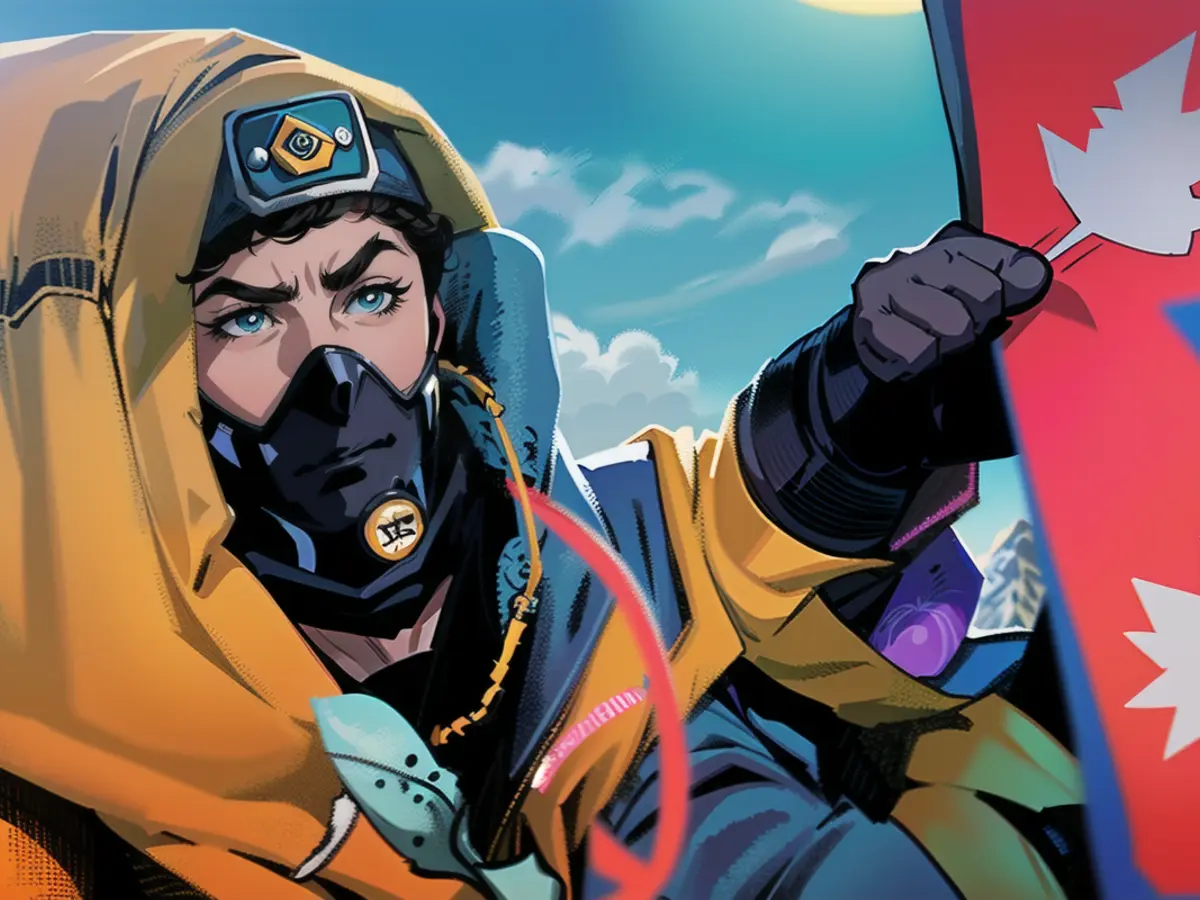"Avoid dwelling on thoughts of mortality"
The "Icefall Doctors" are responsible for making it possible for individuals from around the globe to scale Mount Everest. They identify when ice is about to collapse, paving the way for mountaineers. Without their efforts, the journey to the pinnacle of the world would be even more challenging.
The Khumbu Icefall presents one of the most treacherous paths on Mount Everest, the world's tallest mountain. It's a vast collection of giant ice blocks that slowly and constantly move towards the valley. Climbers are able to overcome it due to the efforts of local professionals who have previously marked out the safest route, stacked with numerous ladders and ropes - a network that needs to be adjusted every season.
Mountain guide Ngima Gyalzen Sherpa was part of this team two years ago. He was particularly intrigued by his role at the time: "Icefall Doctors can sense the thickness and collapse risk of ice just by looking at it," says the now 26-year-old Nepalese. "They can do that as accurately as a mother can tell what's wrong with her child when she sees it." However, to assess the ice, the experts need daylight, which can be hazardous.
As the sun illuminates the potentially unstable structure, it becomes more vulnerable. Deep fractures can open between the blocks, and pieces break off and continuously fall, creating danger. Consequently, most groups of adventurers attempt to traverse the Khumbu Icefall between the base camp and the first of four high-altitude camps under cover of night or in the early hours of the morning.
Some Icefall Doctors have perished in the course of their work. There is no precise figure known; however, the Himalayan Database expedition archive states that approximately 50 people died in the Khumbu Icefall, either from avalanches or falling into deep crevasses. This equates to approximately one in four fatalities on the Nepalese side of Mount Everest.
Ngima Gyalzen Sherpa experienced falling into a deep crevasse during his time as an icefall doctor: "When I fell, I thought I was going to die and thought of my mom." His mother, Ang Dami Sherpa, initially inspired him to pursue a career in mountaineering. She gained recognition as a runner in mountain marathons, which are exceptionally demanding due to the high altitude. He was also influenced by the fact that his community gave renowned mountain guides like Kami Rita Sherpa, the world record holder for ascents of Mount Everest (28 climbs), a hero's welcome upon their return. "Every year they are honored when they return from the mountains," says Ngima Gyalzen Sherpa. He aspired to achieve the same.
After his mishap, he ceased to work as an icefall doctor. However, he didn't do so because of the risks, he insists. He earned more as a mountain guide to foreign visitors. He declined to divulge any specifics. Another Nepalese mountain guide and rescuer, Narendra Shahi Thakuri, believes that icefall doctors do not receive the appreciation they deserve. "The icefall is the most technically challenging section on Mount Everest and not everyone wants to take that level of risk."
However, Ngima Gyalzen Sherpa asserted that mountaineering carries inherent peril - no matter the role played. If an individual wishes to ascend Mount Everest, they'll encounter frozen remains. Over 300 people have perished on the colossus - and many corpses still lie there - partly because rescues can be time-consuming and costly. "I don't provide much thought to my relation with death," says Sherpa. "I'm fond of mountaineering and there aren't many other career choices in the Himalayas." Nonetheless, he always pines for his family - especially his mother, who fears for his well-being.

Read also:
- Floods: water levels remain critical in many places
- Snow chaos further restricts Bavaria
- Continuous operation in the flood areas
- Flood situation remains tense in many places
The Icefall Doctors, whose vital work is based in Nepal, contribute to the International mountaineering community by providing safe passage to climbers on Mount Everest. Their expertise in identifying and managing the risks of the Khumbu Icefall is crucial, as it allows adventurers from around the world to tackle this challenging path.
Mount Everest, recognized as the tallest mountain globally, relies on the support of the International community, thanks to the efforts of teams like the Icefall Doctors from Nepal, who help ensure the safety of climbers seeking to scale its heights.
Source: www.ntv.de






